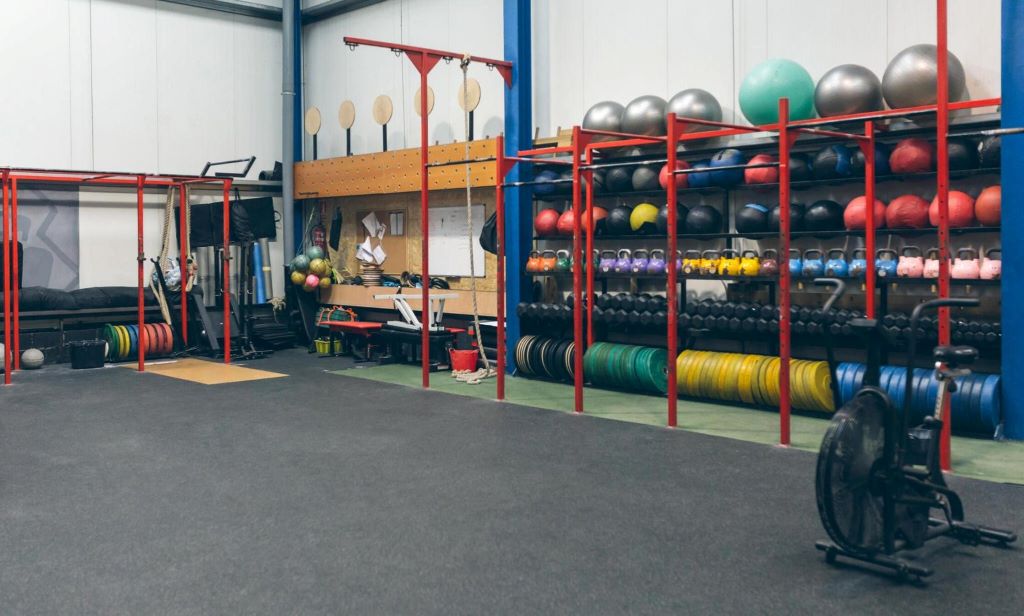Fitness equipment comes in various shapes, sizes, and functionalities, catering to a wide range of exercise preferences and goals. From cardio machines like treadmills and ellipticals to strength training equipment such as dumbbells and barbells, each piece serves a specific purpose in achieving optimal fitness.
However, with the accumulation of different types of equipment, organizing and storing them can quickly become overwhelming. This is where self-storage units offer a practical solution, providing a dedicated space to store and organize fitness equipment efficiently.
In this comprehensive guide, we’ll delve deeper into the art of organizing and share additional tips for maximizing space and maintaining equipment in self-storage units.
Assess Your Equipment Inventory
The first step in efficiently storing fitness equipment is to conduct a thorough assessment of your inventory. Take inventory of all your equipment, including the type, size, and quantity of each item. Consider the frequency of use and the specific needs of each piece of equipment.
For example, cardio machines like treadmills and stationary bikes may require more floor space, while smaller items like resistance bands and yoga mats can be stored in bins or on shelves. By understanding the scope of your equipment inventory, you can develop a strategic storage plan tailored to your needs.

Clean and Maintain Regularly
Once you’ve assessed your equipment inventory, it’s essential to clean and maintain each item regularly to ensure longevity and optimal performance. Dust, sweat, and grime can accumulate on fitness equipment over time, leading to deterioration and malfunctions.
Develop a routine cleaning schedule to wipe down surfaces, lubricate moving parts, and inspect for any signs of wear or damage.
Address any maintenance issues promptly to prevent further damage and extend the lifespan of your equipment. By maintaining a clean and well-maintained storage environment, you can preserve the integrity of your fitness equipment for years to come.
Invest in Quality Storage Solutions
When it comes to organizing fitness equipment in self-storage units, investing in quality storage solutions is key. Consider purchasing sturdy shelving units, wall-mounted racks, or modular storage systems designed specifically for fitness equipment.
These storage solutions offer durability, versatility, and customization options to accommodate various types and sizes of equipment. Choose storage units with adjustable shelves or compartments to maximize space utilization and adapt to changing storage needs over time.

Additionally, opt for storage solutions made from moisture-resistant materials to protect your equipment from humidity and moisture damage.
Utilize Vertical Space Efficiently
Maximizing vertical space is essential for optimizing storage capacity in self-storage units. Install shelving units or racks along the walls of the unit to store equipment vertically, leaving the floor space open for movement and activities.
Group similar items together and arrange them based on size and weight to distribute the load evenly and maintain stability.
Utilize overhead storage solutions such as suspended platforms or ceiling-mounted shelves to store bulky or oversized items, keeping them out of the way while still accessible when needed. By utilizing vertical space efficiently, you can make the most of your storage unit and create a clutter-free environment.
Implement a Labeling System
Maintaining organization and accessibility is crucial when storing fitness equipment in self-storage units. Implementing a labeling system can help streamline the storage process and make it easier to locate specific items when needed.
Label storage containers, shelves, or bins with descriptive labels or color-coded tags to identify the contents quickly and accurately.
Create a detailed inventory list of all stored items and their corresponding locations to track inventory and facilitate retrieval. Regularly update the inventory list as items are added or removed from storage to ensure accuracy and accountability.
Create Zones for Different Types of Equipment
To further enhance organization and efficiency, create distinct zones within your self-storage unit for different types of fitness equipment. Designate separate areas for cardio machines, strength training equipment, yoga accessories, and miscellaneous items to keep similar items grouped.

Arrange equipment within each zone based on frequency of use and accessibility, with frequently used items placed closer to the entrance for easy access. By creating zones for different types of equipment, you can maintain order and structure within the storage unit and streamline the retrieval process.
Incorporate Space-Saving Solutions
In addition to traditional storage solutions, consider incorporating space-saving solutions to maximize storage efficiency in your self-storage unit. Collapsible or foldable equipment such as fold-down benches, portable exercise mats, and compact resistance bands are ideal for saving space and optimizing storage capacity.
Utilize storage containers or bins with stackable designs to store smaller items and accessories neatly. Install hooks or pegs on walls or shelves to hang items such as jump ropes, exercise bands, and towels, keeping them organized and easily accessible.
By incorporating space-saving solutions, you can make the most of your storage space and create a functional and efficient storage environment.
Prioritize Accessibility and Safety
When organizing fitness equipment in self-storage units, prioritize accessibility and safety to ensure a positive storage experience. Store heavy or bulky items on lower shelves or closer to the ground to minimize lifting and reduce the risk of injury.
Keep frequently used items within easy reach and avoid overloading shelves or racks to prevent accidents or damage. Maintain clear pathways and aisle space to facilitate movement and navigation within the storage unit.
Install proper lighting fixtures or motion-sensing lights to illuminate the unit and improve visibility, especially in dimly lit areas. By prioritizing accessibility and safety, you can create a user-friendly storage environment that promotes efficiency and peace of mind.
Conclusion
Efficiently storing fitness equipment in self-storage units requires careful planning, organization, and maintenance.
By assessing your equipment inventory, cleaning and maintaining regularly, investing in quality storage solutions, utilizing vertical space efficiently, implementing a labeling system, creating zones for different types of equipment, incorporating space-saving solutions, and prioritizing accessibility and safety, you can optimize storage capacity and maintain the integrity of your fitness equipment.
Whether you’re a fitness enthusiast, professional athlete, or gym owner, following these tips will help you create a functional and organized storage environment that supports your fitness goals and promotes a healthy lifestyle.




